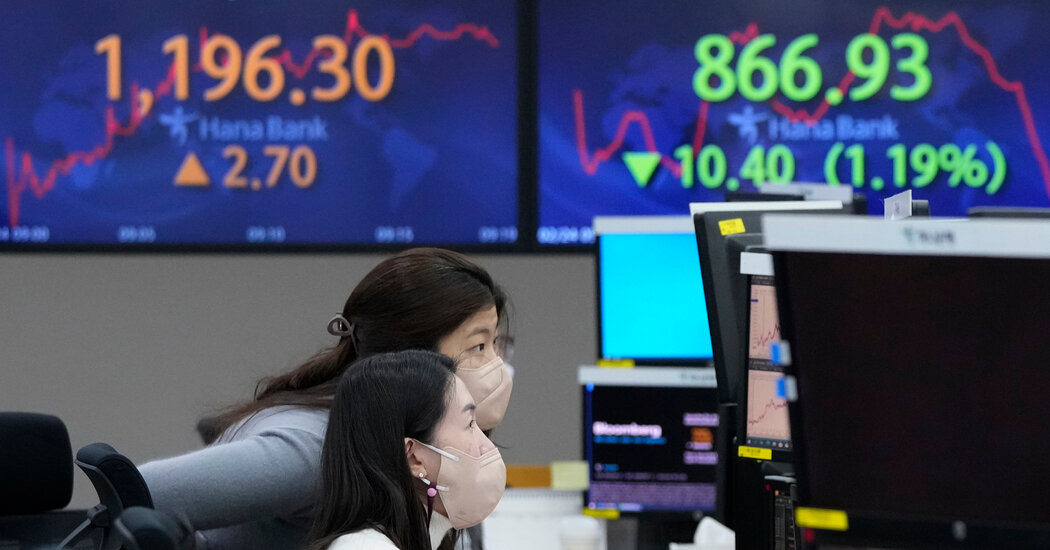The price of oil jumped above $100 a barrel for the first time since 2014 and Asian stocks fell on Thursday as Russia launched an invasion of Ukraine, extending market turmoil in the United States and Europe that had been driven by fears of a full-scale attack.
Wall Street was poised for a slide when trading begins, with futures pointing to a 2 percent drop in the S&P 500.
Japan’s Nikkei 225 was off just over 2.1 percent by early afternoon. In Hong Kong, the Hang Seng Index fell by 3.1 percent, while the Kospi composite index in South Korea was down 2.7 percent. The price of Brent crude oil, the global benchmark, rose 5 percent to nearly $102 a barrel.
Global markets had broadly been souring in recent days. The Stoxx Europe 600 reversed early gains to fall 0.3 percent on Wednesday. The S&P 500 notched its fourth consecutive day of losses, losing 1.8 percent and sliding deeper into correction territory — a drop of more than 10 percent from a recent high. It is now 11.9 percent off its Jan. 3 peak.
The news from Ukraine turned increasingly dire on Thursday. The Russian president, Vladimir V. Putin, ordered the start of a “special military operation,” and Ukraine’s government confirmed that several cities were under attack. Cyberattacks also knocked out government institutions in Ukraine.
Moscow’s stock exchange halted trading, and the ruble fell to a record low against major currencies.
A full-scale invasion could have broad effects on commodities, including oil, natural gas, wheat and metals. Europe is hugely reliant on Russia for energy, and parts of the Middle East and Africa receive most of their wheat from Russia and Ukraine. Even if supply chains remain intact and Russia’s exports are not affected by sanctions, there are concerns that Mr. Putin could punitively cut off supplies.
Few of Russia’s exports head directly to the United States, but disruptions anywhere could drive up prices, prolonging the inflation that already has dragged on longer than officials had anticipated. The Federal Reserve has indicated it is preparing to raise interest rates, aiming to slow inflation by slowing spending, giving supply time to catch up. But higher rates will also dampen growth, and doing so while the markets are already declining risks prolonging the downturn.
U.S. stocks had been flirting with a correction for weeks, as investors fretted over how quickly the Federal Reserve would raise rates. The S&P 500, the U.S. benchmark, had fallen past the 10 percent threshold multiple times in intraday trading but had risen by the end of trading. Technology stocks in particular have fallen far off their highs, and the tech-heavy Nasdaq composite is 18.8 percent below its November record. It is nearing a drop that indicates an even worse change in sentiment on Wall Street: a bear market, or a decline of 20 percent.
Anton Troianovski contributed reporting.


























